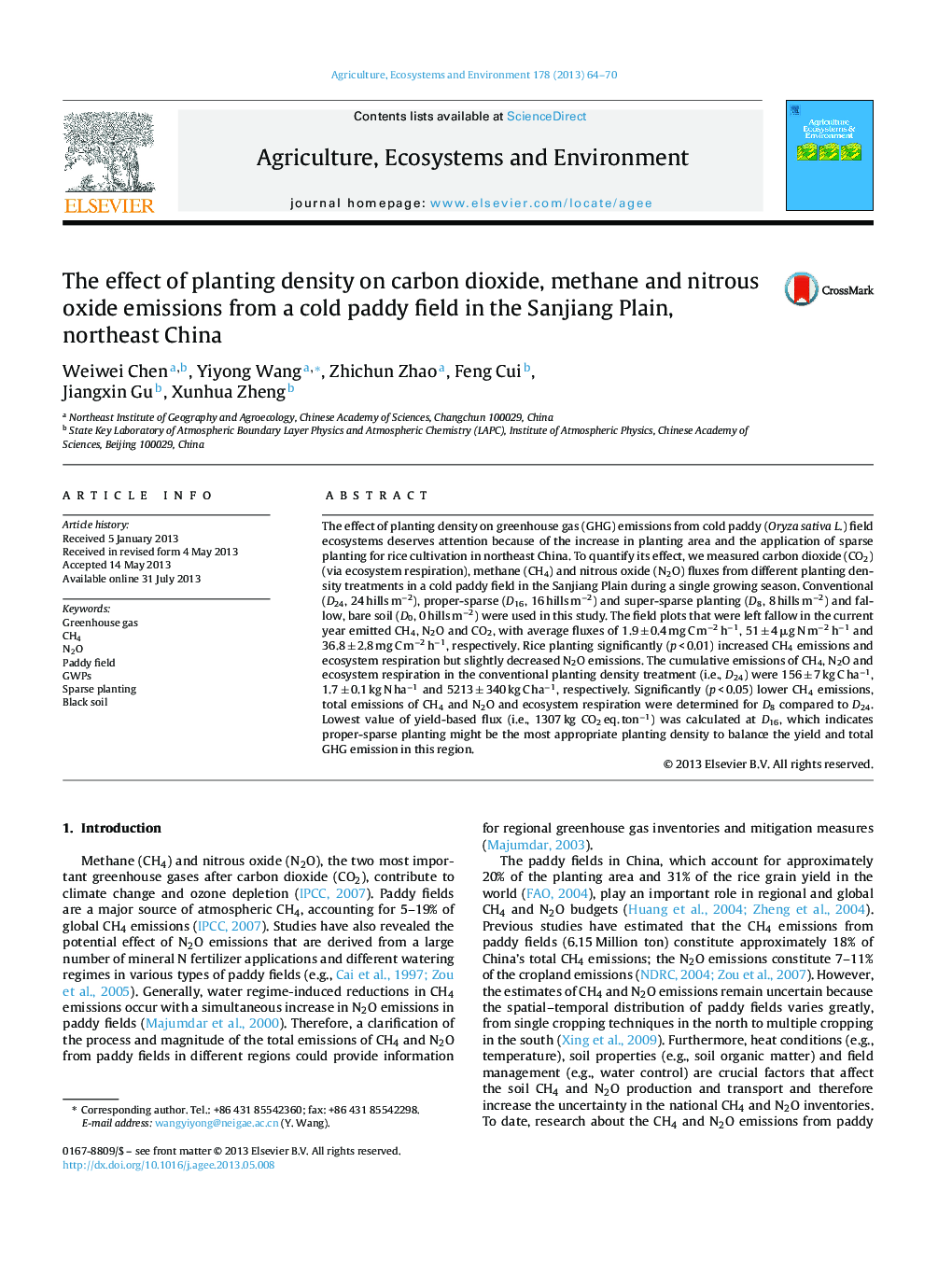| Article ID | Journal | Published Year | Pages | File Type |
|---|---|---|---|---|
| 2414226 | Agriculture, Ecosystems & Environment | 2013 | 7 Pages |
•We quantified GHG emissions from cold paddy fields.•Sparse planting reduced total emissions of CH4 and N2O on an area basis.•Proper-sparse planting can balance the yield and total emission of CH4 and N2O.
The effect of planting density on greenhouse gas (GHG) emissions from cold paddy (Oryza sativa L.) field ecosystems deserves attention because of the increase in planting area and the application of sparse planting for rice cultivation in northeast China. To quantify its effect, we measured carbon dioxide (CO2) (via ecosystem respiration), methane (CH4) and nitrous oxide (N2O) fluxes from different planting density treatments in a cold paddy field in the Sanjiang Plain during a single growing season. Conventional (D24, 24 hills m−2), proper-sparse (D16, 16 hills m−2) and super-sparse planting (D8, 8 hills m−2) and fallow, bare soil (D0, 0 hills m−2) were used in this study. The field plots that were left fallow in the current year emitted CH4, N2O and CO2, with average fluxes of 1.9 ± 0.4 mg C m−2 h−1, 51 ± 4 μg N m−2 h−1 and 36.8 ± 2.8 mg C m−2 h−1, respectively. Rice planting significantly (p < 0.01) increased CH4 emissions and ecosystem respiration but slightly decreased N2O emissions. The cumulative emissions of CH4, N2O and ecosystem respiration in the conventional planting density treatment (i.e., D24) were 156 ± 7 kg C ha−1, 1.7 ± 0.1 kg N ha−1 and 5213 ± 340 kg C ha−1, respectively. Significantly (p < 0.05) lower CH4 emissions, total emissions of CH4 and N2O and ecosystem respiration were determined for D8 compared to D24. Lowest value of yield-based flux (i.e., 1307 kg CO2 eq. ton−1) was calculated at D16, which indicates proper-sparse planting might be the most appropriate planting density to balance the yield and total GHG emission in this region.
